How I bring larger-than-life queer icons to the canvas
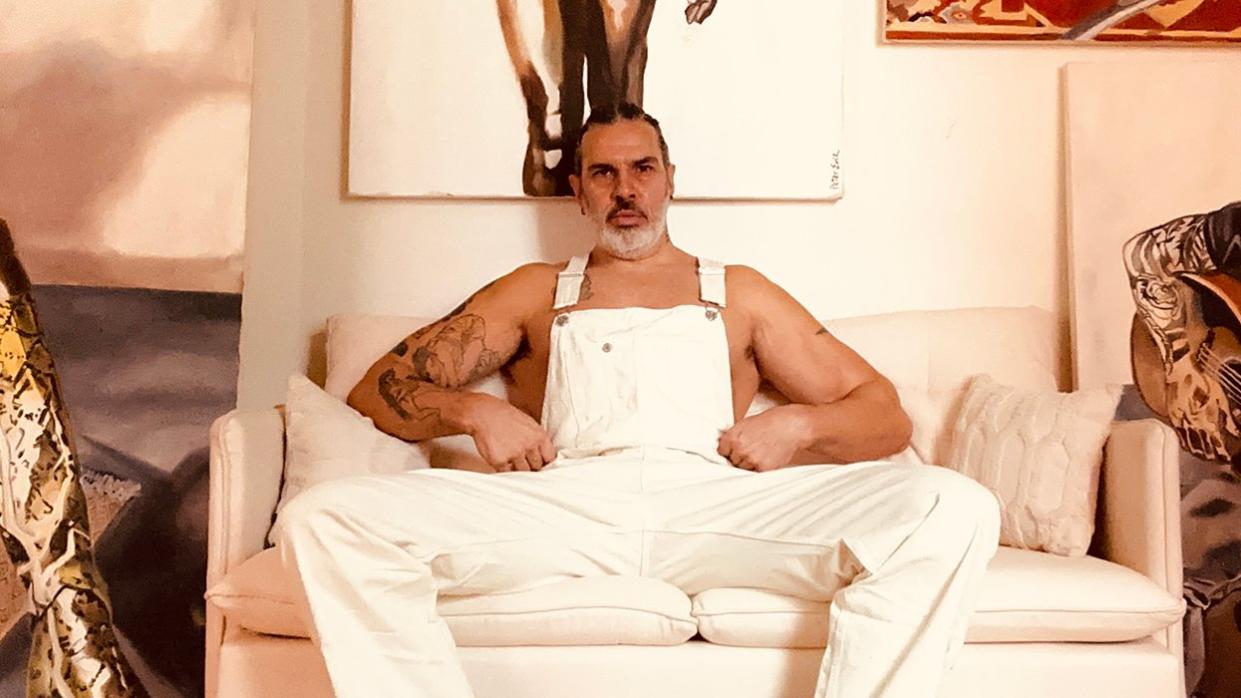
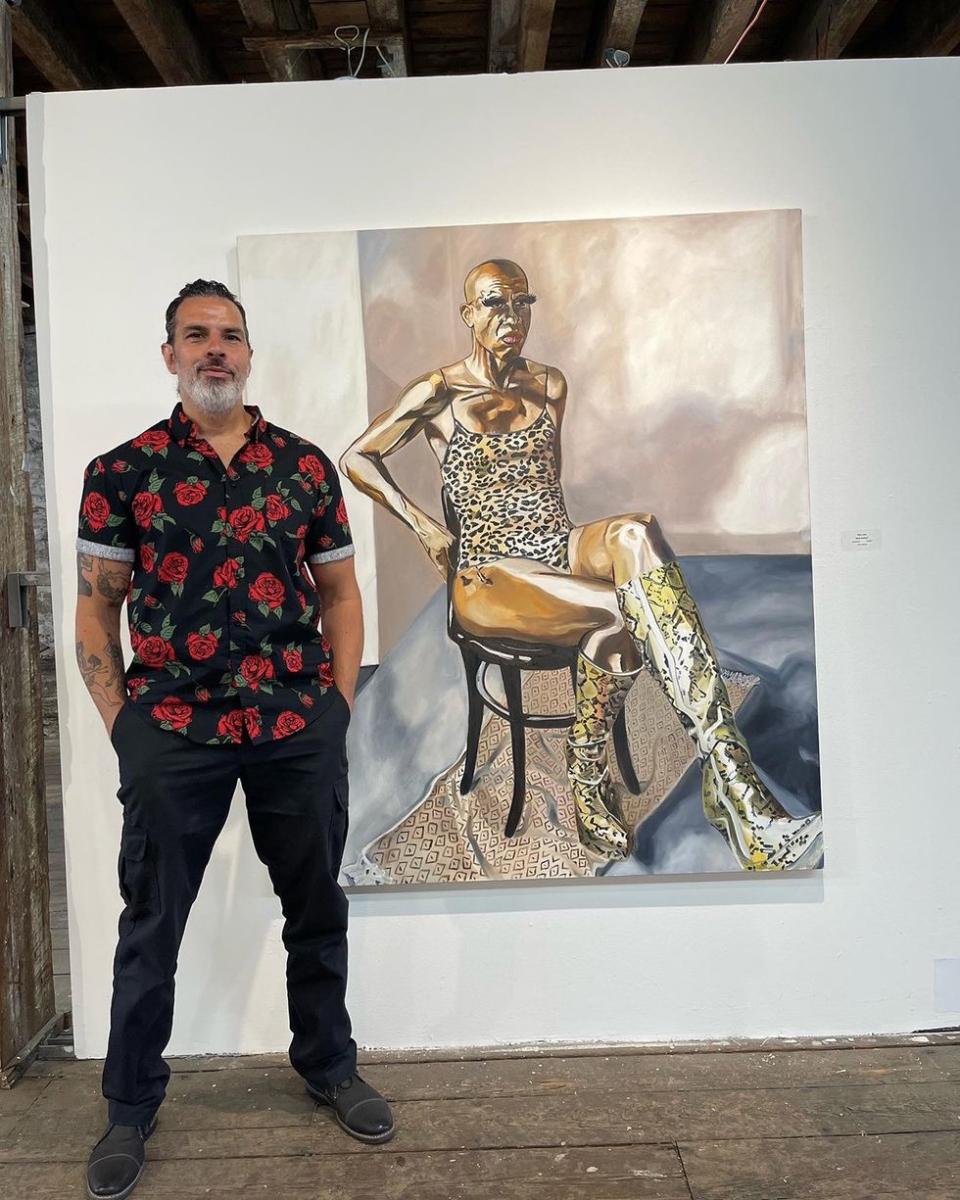
Courtesy Peter Erik Lopez
The painting is enormous: 54 by 64 inches. In it, legendary cabaret performer Joey Arias is partially perched on a white stool against a white wall. His trademark black Betty Page bangs are ever present, but his hair is pulled up because it was a hot day when he came to sit for it. Wearing a simple black moo, Joey gracefully shifts the garment to prevent it from revealing a nipple adorned with a tattoo and a piercing. Under the stool, he sits on lies a yellow and teal area rug I purchased at a 99-cent store down the block moments before he arrived.
We all know and accept that art is subjective. As an artist, you have to realize this fact and accept it entirely if you are going to successfully navigate the barrage of criticism that comes with being an artist. As a queer artist who paints portraits on canvas, I am incredibly and perpetually under criticism by the denizens of the art world: “Why don’t you paint something else?” “Why are the portraits so straightforward?” “Where is the deeper meaning to the work?” “This portrait would be wonderful if maybe you inserted some sort of symbolism.”
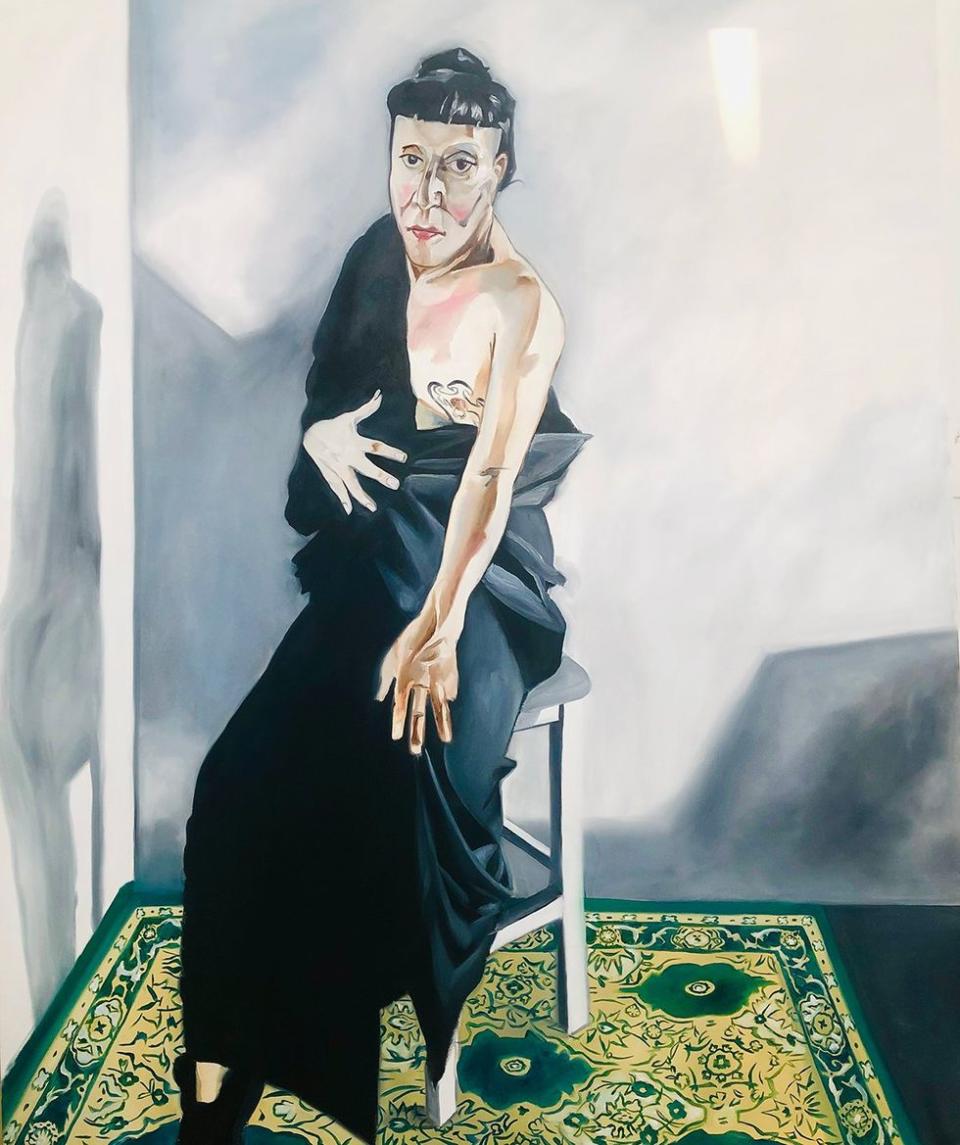
Courtesy Peter Erik Lopez
As a child, my art world consisted of superhero comic books. I read voraciously about these heroes' exploits in 75-cent comic books; these heroes were brave, colorful, and sexy. I used to draw their impossibly shaped bodies covered in impractical and risque costumes for hours. Years later, as a young adult, coming out made me feel like a superhero; now, I was brave and colorful, wearing my impractical and risque clothes.
When I began my journey into serious art, I wanted nothing more than to capture on canvas the gay superheroes who came before me and pioneered the heroic act of coming out—the Joey Ariases, the Harmonica Sunbeams, the Lady Bunnys, the Harvey Fiersteins, the Nathan Lanes, and the André Leon Talleys.
It took eight years to get Joey Arias to sit for me in my studio space on the Lower East Side. Over the years, I attended several of his shows, passing him small handwritten notes with my phone number and a request to sit for me. (One year, he took the note and, before I could reintroduce myself, said, “I know who you are”). I found him on Instagram, but I still had no luck. Then, the pandemic hit, and the world shut down. With bars, theaters, and cabarets all closed, a vacuum of time opened for entertainers like Joey Arias. Probably having not much else to do, he finally conceded to my request.
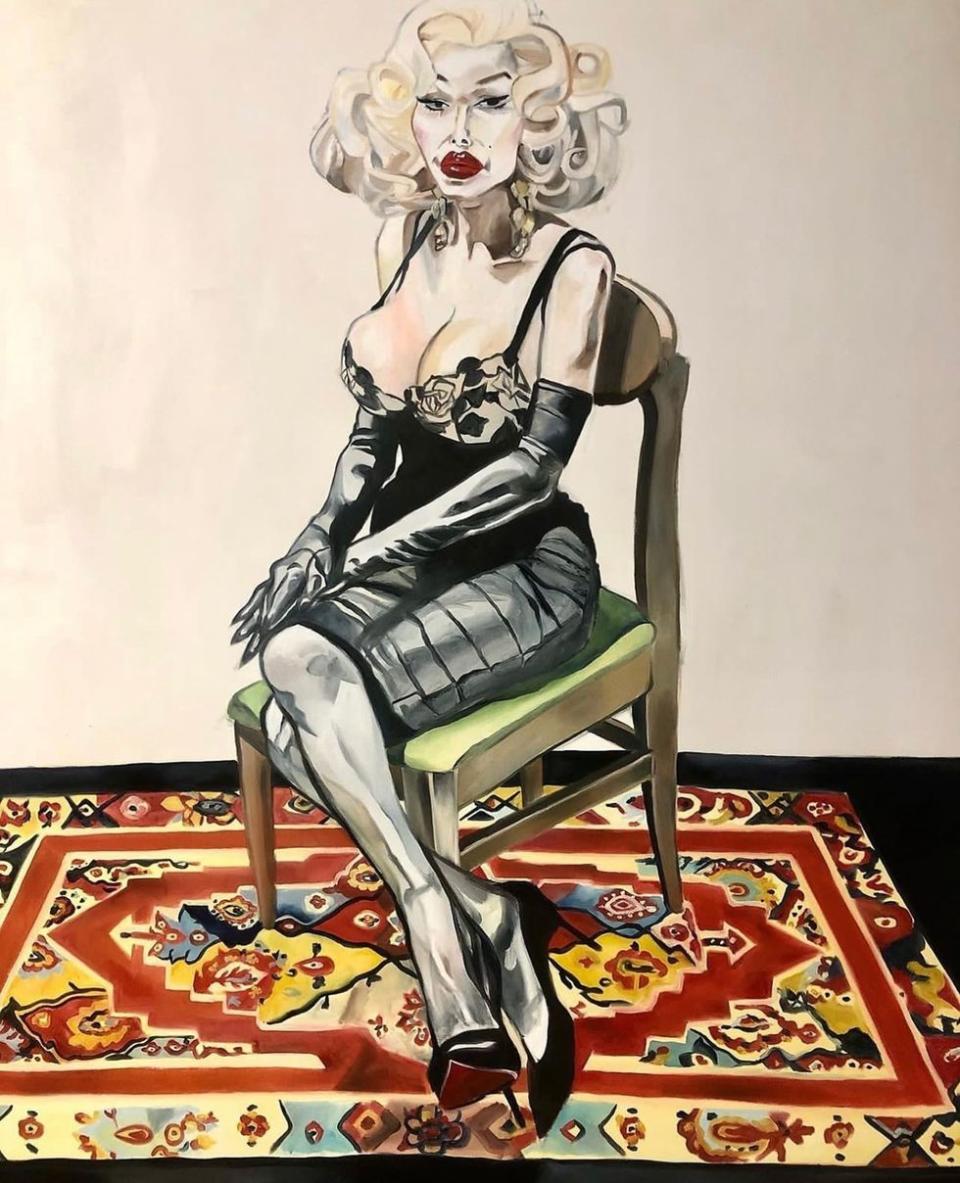
Courtesy Peter Erik Lopez
In painting Joey Arias, I captured on canvas my first icon, and the idea of painting more queer heroes of mine formed. I next contacted drag and ballroom legend Kevin Aviance, who said yes immediately. Then Amanda LePore. Then Mario Cantone, Andre DeShields, Miss PepperMint, John Cameron Mitchell, Antonio Biaggi, Boomer Banks, and the list goes on.
Since Arias, the portraits have been as large or larger. At the same time, their composition is simple. All of these icons are depicted against the white wall of my studio, only accompanied by the chair they are sitting on and a rug underneath. It is an honor to capture these larger-than-life figures at a time when the world has ever so slightly opened—and, in increasingly many spaces, closed—up to us as real, natural, and human.
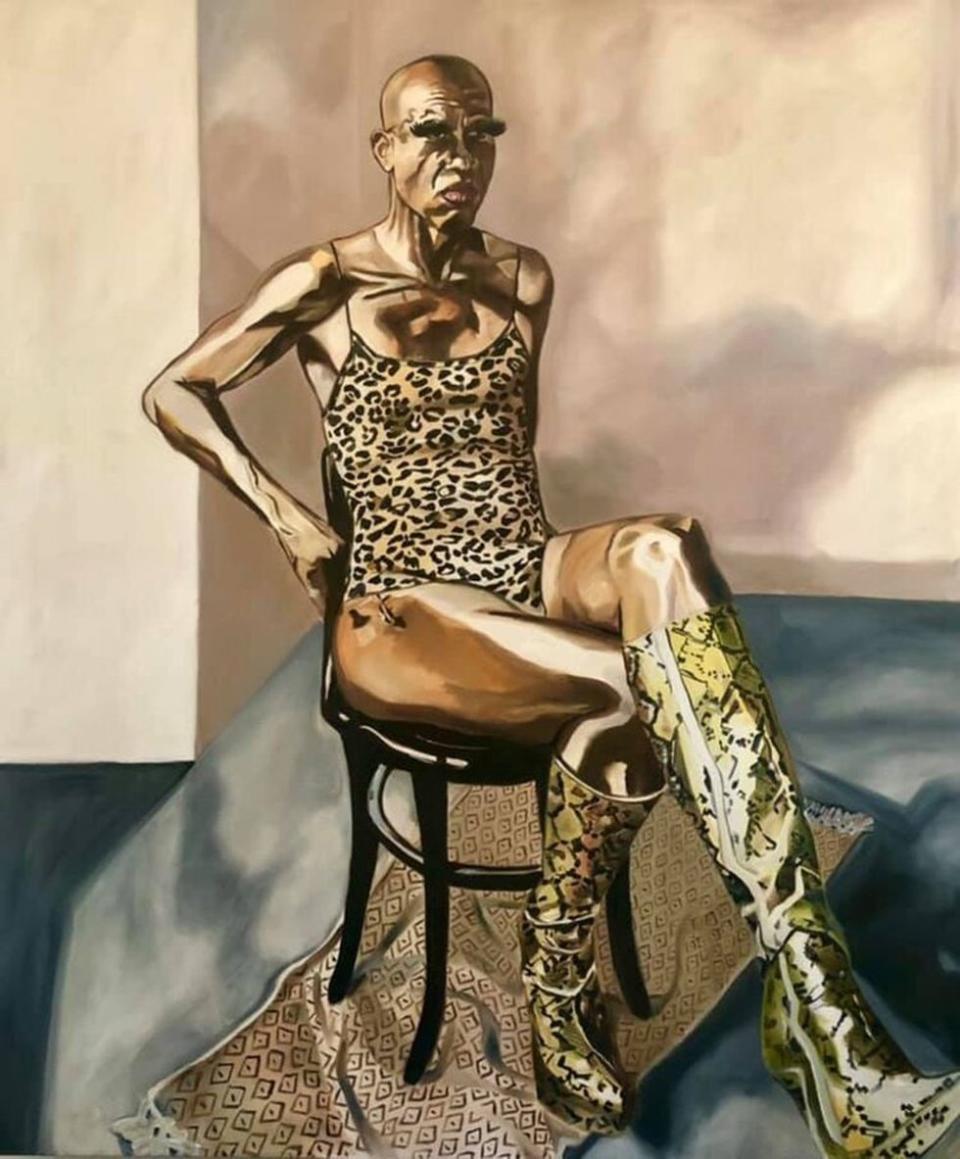
Courtesy Peter Erik Lopez
We have witnessed in the past two decades a surge of queer bodies and stories taking centerstage, from shows like RuPaul's Drag Race and Pose to films like Carol and Moonlight, receiving accolades previously unthought of. Even my beloved X-Men are celebrating the second gay wedding in the comics this year. Equally, with tremendous progress comes a great reckoning: drag queens engaged in Story Hours are under fire, with some needing security escorts to and from events; books containing queer themes or characters are being pulled from school libraries; and with legislatures placing restrictions on trans and women's rights, no doubt, marriage equality is next on the chopping block.
So when I think about the people who look at my straightforward, no-gimmick portraits and ask, “Where is the deeper meaning to work?” my answer is, “Today’s headlines.” Or “Florida”. Maybe tomorrow it will be “The Supreme Court”.
This past October, I held an open studio session. In two separate moments during a weekend, two young trans individuals waited patiently to speak to me among the throngs moving in and out of the studio. When they got close enough to talk to me, they gushed over Amanda LePore's portrait, not only as fans of Amanda but also as supporters of the representation that a huge painted portrait of Amanda meant to them.
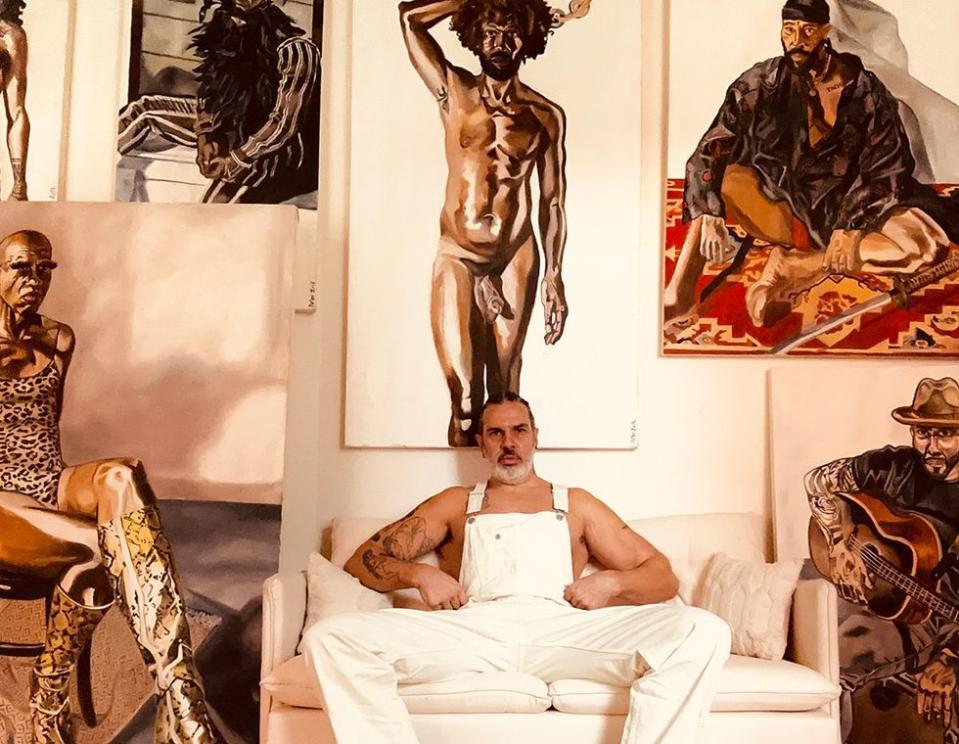
Courtesy Peter Erik Lopez
I imagined, for a moment, these two young trans people walking through other art studios that day, seeing photo-real paintings of men and women. Mostly white. Very straight. Maybe they were lucky enough to see an artist depicting a gay or lesbian couple embracing.
Then, they walk into my studio space, and among the stacks of work is Joey in one corner, Kevin Aviance in another, and Amanda in all her glory: not painted as a spectacle or photographed with a side-show lens - but human beings in a world they've created into their own image.
Peter Erik Lopez is a NYC based queer artist who paints portraits of queer creatives and icons. Visit petereriklopez.com to see his latest works, and follow him on Instagram at @petererikart.
Have an inspiring personal story to tell? Want to share an opinion on an issue? Learn more by visiting out.com/submit.

